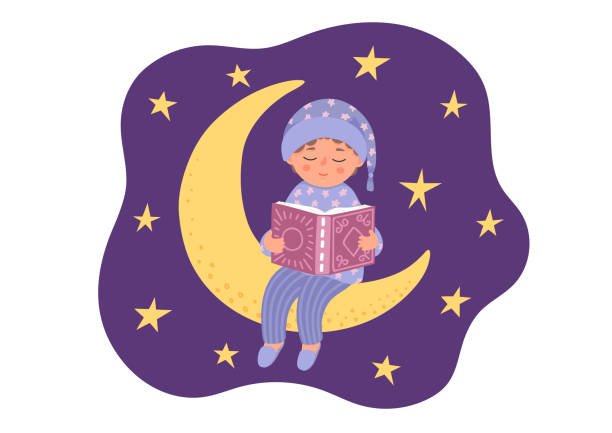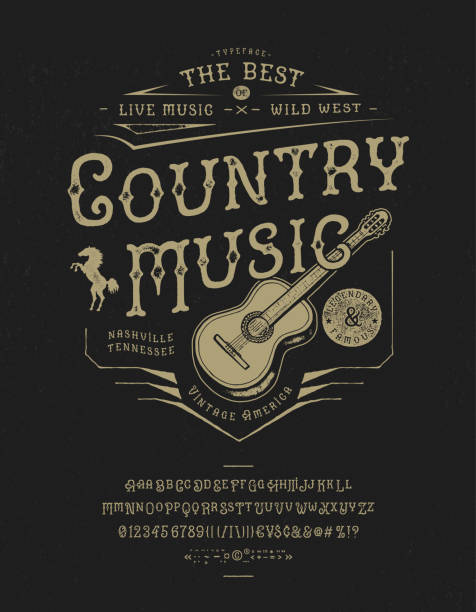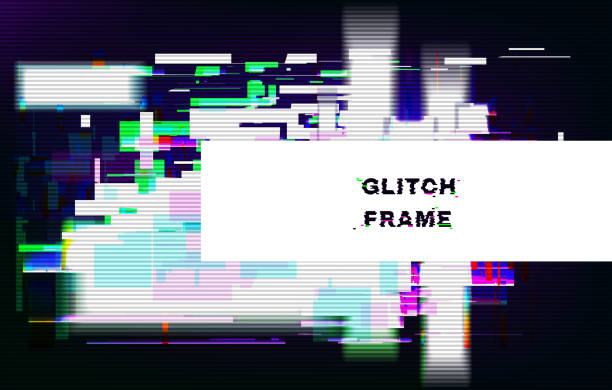How To Write A Book For Baby (15 Best Ways)
Embarking on the enchanting journey of creating a book for babies is a venture into a world where simplicity is a symphony, and every word is a step in the dance of early literacy.
Crafting a literary treasure for the tiniest readers is an art that transcends mere storytelling; it’s a celebration of the delicate dance between words and imagination, a journey where each page becomes a gateway to wonder.
In this exploration, we will delve into the nuances of writing for babies, from understanding their unique cognitive and sensory needs to crafting captivating narratives that resonate with the youngest minds.
Join me in unlocking the secrets of board books and cloth pages, navigating the publishing cosmos, and embracing cultural sensitivity to ensure that every tale becomes a cherished companion in the magical journey of a baby’s first literary steps.
Welcome to the realm where storytelling is a gentle lullaby, and each word is a spark in the dazzling constellation of early childhood literature.
How To Write A Book For Baby
Certainly! Here’s a step-by-step process on how to write a book for babies:
Understand Your Audience
Identify the age group you’re targeting within the baby category (e.g., 0-12 months).
Consider developmental stages and what appeals to their senses.
Choose a Theme
Select a simple, engaging theme that resonates with babies, such as colors, shapes, animals, or daily activities.
Define the Purpose
Decide if your book aims to educate, entertain, or both. For babies, a combination usually works well.
Create a Basic Outline
Sketch a rough outline of your book. For a baby book, this could be a series of simple scenes or concepts.
Keep it Simple
Use short sentences and straightforward language. Babies respond well to repetition and rhythm.
Incorporate Interactive Elements
Introduce touch-and-feel textures, flaps to lift, or sound-producing elements to make the book interactive and engaging.
Illustrate Visually Appealing Images
Focus on vibrant, high-contrast colors and bold, simple shapes. Illustrations should be visually stimulating for babies.
Consider Board Books
If your target age group is very young, consider using durable board books that can withstand chewing and grabbing.
Test with the Audience
Share your book with babies or parents of the target age group to gather feedback on its effectiveness.
Edit and Refine
Revise and refine your book based on feedback. Ensure that the language is age-appropriate and the content is engaging.
Seek Professional Help (Optional)
If needed, consider hiring a professional editor or illustrator to enhance the quality of your book.
Design Layout
Pay attention to the layout of the book. Ensure that text and images are well-spaced and easy to follow.
Finalize and Publish
Once satisfied with the final version, explore publishing options. This could include traditional publishing or self-publishing through platforms like Amazon Kindle Direct Publishing.
Promote Your Book
Develop a marketing strategy to promote your baby book. Consider reaching out to parenting communities, utilizing social media, or participating in relevant events.
Stay Open to Feedback
Even after publication, stay open to feedback. Consider updates or new editions based on the response from your target audience.
Remember, the key is to keep it simple, visually appealing, and age-appropriate while considering the sensory experiences that will captivate a baby’s interest.

Understanding the Baby Audience
Delving into the enchanting realm of baby literature requires not just a pen but a playful dance with the delicate chords of infant curiosity.
Understanding the baby audience transcends conventional storytelling; it’s a symphony of sensory exploration.
Picture a world where every page is a gateway to wonder, where the language is a gentle lullaby, and each illustration is a kaleidoscope of color, beckoning tiny hands to touch and tiny minds to dream.
It’s not merely about crafting words; it’s about composing an experience that resonates with the heartbeats of the tiniest literary critics.
To write for babies is to embark on a journey where simplicity is profound, and every turn of the page is a treasure map leading to giggles, coos, and the beginning of a lifelong love affair with the written word.
Cognitive and sensory development in babies
In the wondrous tapestry of infancy, cognitive and sensory development are the brushes that paint the first strokes of a child’s understanding of the world.
From the earliest days, a baby’s senses are like eager explorers, venturing into a realm of novel stimuli. Sight unfolds as a kaleidoscope of shapes and colors, while touch becomes a language, translating the textures of soft blankets and tender caresses into a tactile vocabulary.
Auditory senses awaken to the symphony of voices and the comforting melodies of lullabies. Cognitive development, the silent architect, constructs the scaffolding for future learning, shaping the foundation of memory, attention, and problem-solving skills.
It’s a delicate dance between synapses and sensations, where each coo, each grasp, becomes a stepping stone in the breathtaking mosaic of a child’s cognitive and sensory odyssey.
Research and Inspiration
Embarking on the journey of creating literature for the tiniest literary enthusiasts requires more than just a pen and paper—it’s an expedition into the heart of imagination, a quest for inspiration as boundless as a child’s dreams.
Research and inspiration become the compass guiding this exploration, weaving together the threads of child development studies, whimsical anecdotes, and the kaleidoscope of emerging trends.
Picture yourself in a vibrant library of ideas, where the pages of past classics and contemporary wonders flutter like the wings of inspiration.
It’s not just about collecting facts; it’s about absorbing the magic that makes a baby’s eyes light up with curiosity.
It’s a voyage where the line between research and daydreaming blurs, and every nugget of knowledge becomes a spark that ignites the creative wildfire.
In the realm of baby literature, research isn’t a destination; it’s a map to an ever-expanding wonderland, and inspiration is the compass pointing to the uncharted territories of storytelling brilliance.
Surveying existing baby literature
Navigating the enchanting landscape of baby literature is akin to embarking on a treasure hunt through the pages of cherished classics and contemporary gems.
Surveying existing baby literature is not a passive exploration but an interactive dialogue with the whispers of storytelling genius.
It’s a journey through board books that cradle the first words, cloth tales that unfold like gentle lullabies, and vibrant picture books that are portals to a world of imagination.
Each turn of the page reveals the footprints of storytellers who have danced with the rhythm of a baby’s heartbeat, leaving behind a trail of narrative breadcrumbs.
It’s an opportunity to decode the secrets of engagement, the alchemy of illustrations, and the delicate balance between simplicity and sophistication.
In this literary safari, each book is a guidepost, offering insights into the uncharted territories of captivating narratives that have stood the test of tiny fingers and curious gazes.

Crafting a Compelling Narrative
Crafting a compelling narrative for the youngest readers is akin to orchestrating a symphony of simplicity and enchantment.
It’s not just about stringing words together; it’s about weaving a magical tapestry that captures the essence of a child’s imagination.
Imagine words as playful sprites, dancing across the pages, each carrying the melody of a story that resonates with the giggles and coos of tiny listeners.
The narrative is a journey, a rhythmic exploration of the world’s wonders through the eyes of a baby. It’s about creating a cocoon of comfort, where each sentence is a hug, and every page turn is an invitation to explore the boundless realms of curiosity.
Crafting a narrative for babies is like painting with words, using a palette of emotions to create a masterpiece that leaves an indelible mark on the canvas of a child’s earliest literary memories.
Developing a simple yet captivating storyline
In the delicate art of crafting literature for babies, the challenge lies in distilling the complexity of storytelling into a symphony of simplicity.
Developing a simple yet captivating storyline is akin to capturing the essence of a sunset in a dewdrop—an artful concentration of beauty and wonder in a confined space.
It’s about choosing words with the precision of a master chef, each one a flavorful morsel that tantalizes the taste buds of a baby’s burgeoning comprehension.
The storyline becomes a gentle dance, where every sentence is a step that leads deeper into the heart of the narrative.
It’s a choreography of simplicity that doesn’t undermine the intelligence of the little reader but rather celebrates the beauty of uncomplicated elegance, ensuring that each page is a treasure trove of joy, discovery, and the timeless magic of a well-told tale.
Choosing the Right Format
Selecting the right format for a baby book is akin to choosing the perfect frame for a cherished masterpiece—each element should enhance the other, creating an ensemble that captivates and delights.
It’s not merely a choice between board books and cloth pages; it’s a symphony of tactile consideration and visual harmony.
Imagine the format as a playground of possibilities where the dimensions are tailored for tiny hands to explore effortlessly.
Board books, sturdy and resilient, become portals to a world of touch and discovery, while cloth books, soft and inviting, transform storytelling into a cozy embrace.
It’s a decision that transcends mere physicality; it’s about creating an experience, ensuring that the chosen format becomes an extension of the narrative, a vessel that cradles the story with the same tenderness that a parent holds their little one.
In the realm of baby literature, the right format isn’t just a vessel—it’s a magic carpet that carries the imagination to far-off lands with every turn.
Board books vs. cloth books: Pros and cons
The choice between board books and cloth books for our youngest readers involves a delicate balance, akin to deciding between sturdy fortresses and soft, inviting havens.
Board books, with their robust pages, are the guardians of durability, standing resilient against the whims of tiny hands and inevitable drool encounters.
They offer a tactile experience that fosters interaction, making each page turn a tangible exploration. However, cloth books, like literary security blankets, provide a gentler introduction to the world of reading.
Their soft pages invite the tiniest fingers to dance across the fabric, turning storytelling into a sensory symphony.
Board books excel in longevity and practicality, yet cloth books weave a narrative of comfort and coziness. The former withstands the rigors of early exploration, while the latter wraps storytelling in a snuggly embrace.
The choice lies not just in the material but in the desired balance of resilience and tenderness, creating a literary journey that caters to both the robust curiosity and the delicate senses of our littlest readers.
Writing Style and Language
In the enchanted realm of baby literature, writing style and language become the enchanting spell that transforms mere words into the golden keys unlocking the doors to a child’s imagination.
It’s a symphony of simplicity, where each word is a note, and the melody is crafted to resonate with the giggles and coos of the tiniest audience.
Imagine language as a paintbrush, creating vivid landscapes with strokes of simplicity that don’t just tell a story but cradle it in the gentle arms of comprehension.
It’s not just about constructing sentences; it’s about building bridges between the reader and the story, ensuring that every word is a stepping stone in the wondrous journey of early literacy.
Writing for babies is a dance of linguistics, where clarity pirouettes with charm, and brevity waltzes with brilliance, creating a narrative ballet that leaves an indelible imprint on the hearts and minds of the littlest literary connoisseurs.

Using age-appropriate language and vocabulary
In the magical realm of crafting literature for the youngest minds, the art lies in using language as a palette, selecting hues that resonate with the tender chords of early comprehension.
Employing age-appropriate language and vocabulary is not a concession to simplicity but an invitation to communicate in the delightful language of a child’s evolving understanding.
It’s about weaving a linguistic tapestry where each word is a stepping stone in the journey of discovery, neither overwhelming nor understating the vast landscape of a young mind.
Picture words as gentle whispers that caress the senses, introducing new concepts with the grace of a butterfly landing on a flower.
It’s a dance where every syllable is a partner in the rhythm of storytelling, ensuring that the narrative unfolds like a blossoming flower, revealing layers of meaning in a way that is both accessible and enriching for the blossoming intellect of a young reader.
Collaborating with Illustrators
Embarking on the collaborative adventure with illustrators in the realm of baby literature is akin to orchestrating a visual symphony where words and images dance together in perfect harmony.
It’s not merely a partnership; it’s a shared expedition into the uncharted territories of imagination. Imagine words as the notes of a melody, waiting to be transformed into vibrant visuals that resonate with the tender chords of a child’s curiosity.
Collaborating with illustrators is an alchemical fusion of creativity, where each stroke and shade breathes life into the narrative.
It’s a duet where the storyteller’s words and the artist’s brushstrokes engage in a lyrical conversation, crafting a tale that transcends the limitations of language alone.
In this collaborative ballet, the illustrator becomes the visual poet, translating the essence of the narrative into images that captivate not just the eyes but the very soul of the youngest readers.
Together, words and illustrations embark on a journey, inviting children to traverse the enchanted landscape where stories come alive in a magical pas de deux.
Finding and working with illustrators experienced in baby books
Embarking on the quest to find and collaborate with illustrators experienced in the delicate art of baby books is like seeking out the co-creator of a visual lullaby.
It’s not merely about talent; it’s about finding an artistic soulmate who can translate the nuances of early childhood into a visual symphony.
Imagine the illustrator as a conjurer, capable of transforming the ordinary into the extraordinary with the stroke of a brush.
The search is not just for technical prowess but for a kindred spirit who understands the whimsy, the simplicity, and the boundless wonder that accompanies a baby’s first literary journey.
Working with illustrators for baby books is a collaborative ballet where communication transcends words, and the visual narrative becomes a dance of hues and shapes.
It’s about entrusting the storyteller’s vision to an artist who not only possesses technical expertise but also an intuitive understanding of the enchanting world that unfolds between the lines.
Together, author and illustrator embark on a magical partnership, breathing life into the pages where imagination and artistry entwine to create a literary masterpiece for the littlest of readers.
Testing and Iteration
In the exhilarating laboratory of baby literature, the process of testing and iteration is akin to a whimsical alchemy, where each trial becomes a spark of magic, refining the potion of storytelling.
It’s not merely about collecting feedback; it’s about orchestrating a symphony of reactions from the most candid critics—babies. Picture the pages of a book as experimental canvases, each turn a potential revelation.
Testing becomes a playground of discovery, where the giggles, gurgles, and rapt attention of tiny readers are the litmus test for narrative brilliance.
It’s a dance of refinement, a choreography of adaptation, where every piece of feedback, every furrowed baby brow, becomes a clue in unraveling the secrets of captivation.
The process is a celebration of the unpredictable, a journey where iteration is not just a means to an end but a perpetual enchantment, ensuring that each edition is not just a book but a symphony of storytelling evolution.
Conducting focus groups with babies and caregivers
Conducting focus groups with babies and caregivers in the realm of baby literature is a spirited exploration into the heart of storytelling reception.
Picture a room filled not just with the babble of tiny voices but with the collective wisdom of caregivers who understand the intricacies of their little ones.
It’s an immersive experience, where the gurgles and coos of infants become invaluable feedback, and the expressions of caregivers offer insights as rich as a well-worn storybook.
The focus groups become a lively stage where the narrative unfolds not just on paper but in the animated reactions of the tiniest critics and their attentive guides.
It’s a symphony of laughter, curiosity, and perhaps the occasional nap, each note a clue in deciphering the melody of engagement.
In this collaborative dialogue, caregivers become the narrators of experience, and babies, the discerning connoisseurs whose reactions guide the nuanced choreography of crafting literature that resonates with the youngest of audiences.

Navigating Publishing Options
Navigating the labyrinth of publishing options for baby literature is akin to embarking on a literary odyssey where the choice of publishing becomes a compass guiding the narrative into the hands of eager readers.
It’s not just a decision between traditional publishing and self-publishing; it’s a strategic quest to find the right constellation in the vast galaxy of publishing possibilities.
Picture the author as a cosmic navigator, steering through the nebula of distribution channels and marketing strategies, seeking the perfect orbit for their literary creation.
Traditional publishing may be the well-established star, with its gravitational pull of industry connections and editorial expertise.
On the other hand, self-publishing emerges as the daring comet, offering the freedom to blaze an independent trail but requiring the author to harness their own creative gravity.
The decision becomes a celestial dance, where each option twinkles with promises and challenges, and the author becomes the celestial cartographer of their own literary destiny. In this cosmic ballet, the publishing choice isn’t just a means to an end; it’s a celestial adventure, guiding the narrative to its rightful place in the literary cosmos.
Traditional publishing vs. self-publishing for baby books
The decision between traditional publishing and self-publishing for baby books is a literary crossroads where the author must weigh the merits of well-trodden paths against the allure of uncharted territory.
Traditional publishing stands as the venerable gatekeeper to the literary world, offering the author the support of established editors, widespread distribution channels, and the prestige of industry recognition.
It’s the well-worn road, paved with the imprints of celebrated authors and time-tested marketing strategies. On the other hand, self-publishing emerges as the intrepid trailblazer’s route, empowering authors to control every facet of their creation, from content to design.
It’s the path where creative autonomy and speed to market reign supreme, but the author shoulders the responsibility of navigating the intricacies of marketing and distribution independently.
The choice becomes a dynamic dance between tradition and innovation, each option carrying its own set of challenges and rewards, ultimately shaping the destiny of the baby book in the vast landscape of children’s literature.
Marketing and Distribution
In the grand tapestry of baby literature, marketing and distribution become the enchanting weavers, casting threads that connect a tale with its audience in a dance of discovery.
Imagine the narrative as a treasure map, and marketing as the compass guiding caregivers and curious little explorers to the literary chest of wonders.
It’s not just about selling a book; it’s about orchestrating a symphony of visibility that resonates in the hearts of parents and echoes in the giggles of infants.
Distribution channels become the bridges between author and reader, each copy of the book a passport to an enchanted realm.
Marketing for baby books is not a mere announcement; it’s a lullaby sung across digital landscapes and traditional avenues, inviting families to embark on a literary journey hand-in-hand with a whimsical tale.
In this kaleidoscope of promotion and dissemination, the story becomes a beacon, drawing families into the embrace of literature, ensuring that each baby book finds its way into the arms of those who crave the magic held within its pages.
Creating a captivating book cover and promotional materials
Crafting a captivating book cover and promotional materials for a baby book is akin to conjuring the visual spell that beckons families into the enchanting world within.
The book cover becomes the first glimpse, a magical portal that invites curious gazes and tiny fingers to explore.
Picture the cover as a canvas where every brushstroke counts—a vibrant tableau of colors, whimsical illustrations, and a design that resonates with the hearts of both caregivers and their little ones.
It’s not just about aesthetics; it’s about capturing the essence of the story in a single glance. Promotional materials, like heralds of literary joy, amplify this enchantment.
From whimsical posters to heartwarming teaser videos, each piece becomes a melody in the symphony of anticipation.
It’s a choreography of visuals and messaging that dances across digital landscapes and traditional avenues, ensuring that the allure of the story is not just seen but felt.
In this dance of design and promotion, the book cover and materials become not just a gateway but an irresistible invitation to step into the boundless wonders of baby literature.

Considerations for Global Audiences
In the kaleidoscopic tapestry of baby literature, considerations for global audiences become the compass guiding storytelling across cultural landscapes.
It’s not merely about translating words; it’s about weaving tales that transcend borders and resonate with the universal heartbeat of parenthood.
Imagine the narrative as a traveler, traversing diverse terrains where bedtime stories are told in a multitude of languages and bedtime rituals unfold beneath a myriad of stars.
It’s a symphony of cultural sensitivity, where every character, illustration, and theme is a thread in the rich fabric of global diversity.
Considerations for global audiences in baby literature become a celebration of shared experiences and unique traditions, ensuring that each page isn’t just a story but an open invitation for families worldwide to gather around the same literary hearth, embracing the warmth of a universal storytelling embrace.
Cultural sensitivity in content and illustrations
Cultural sensitivity in both content and illustrations within the realm of baby literature is the art of weaving a tapestry that respects and celebrates the rich diversity of our global family.
It’s more than a nod to cultural differences; it’s an embrace of the multifaceted stories that make up the human experience.
Imagine the narrative as a bridge connecting little readers from various backgrounds, each word and image a stepping stone that reflects the myriad hues of traditions and beliefs.
Cultural sensitivity means infusing authenticity into characters, settings, and traditions, creating a literary world where every child sees themselves and learns to appreciate the beautifully varied narratives of their peers.
It’s about crafting a universal language of love, acceptance, and understanding, ensuring that each page is not just a story but a reflection of the vibrant mosaic that is our shared global heritage.
Frequently Asked Questions about How To Write A Book For Baby
What makes writing a book for babies different from writing for other age groups?
Writing for babies requires a focus on simplicity, engaging visuals, and interactive elements that stimulate their senses. The content should align with their developmental stage, making it a unique and specialized writing process.
How do I choose a theme that resonates with babies in a book?
Opt for themes that are simple and relatable, such as colors, shapes, animals, or daily activities. Consider what captures a baby’s attention and curiosity during their early stages of development.
Why is repetition important in a baby book, and how can it be effectively incorporated?
Repetition aids in cognitive development for babies. Simple, repetitive patterns in language or themes create familiarity and enhance engagement. Use consistent phrases or concepts throughout the book to reinforce learning.
What visual elements are most appealing to babies, and how should they be incorporated into the book?
High-contrast colors, bold shapes, and visually stimulating illustrations are key. Opt for vibrant, contrasting colors, and use simple yet eye-catching images. Consider interactive elements like touch-and-feel textures or lift-the-flap features.
Is self-publishing a viable option for baby books, and what platforms are recommended?
Yes, self-publishing is a viable option. Platforms like Amazon Kindle Direct Publishing (KDP) offer opportunities for independent authors. Ensure the format is suitable for young readers, and consider board books for durability.
How can I make my baby book interactive and engaging?
Incorporate touch-and-feel textures, lift-the-flap features, or sound-producing elements. Interactive elements enhance the sensory experience and keep babies engaged during reading.
Are there specific considerations for the layout of a baby book?
Yes, maintain a simple and uncluttered layout. Ensure that text is well-spaced, and illustrations are prominently displayed. The overall design should facilitate easy comprehension for young readers.
How do I test the effectiveness of my baby book with the target audience?
Share the book with babies or parents of the target age group. Observe their reactions and gather feedback on engagement levels. Adjust the content based on their responses to enhance the book’s effectiveness.
Should I seek professional help for editing and illustrating my baby book?
Depending on your skills, seeking professional help can enhance the quality of your book. Editors and illustrators with experience in children’s literature can provide valuable insights and improve overall appeal.
What marketing strategies can be employed to promote a baby book effectively?
Target parenting communities, utilize social media platforms, and consider participating in events related to early childhood development. Emphasize the book’s unique features and benefits for babies to attract the intended audience.
How can I stay open to feedback after publishing my baby book?
Encourage reviews from parents and caregivers. Monitor online platforms, engage with your audience through social media, and consider conducting surveys. Use feedback to inform future editions or improvements to meet the evolving needs of your readership.
Conclusion
In conclusion, crafting a book for babies is a unique and specialized endeavor that requires careful consideration of the developmental stages and preferences of the target audience.
From choosing a theme that resonates with young minds to incorporating interactive elements and visually appealing illustrations, the process demands a keen understanding of early childhood development.
The importance of simplicity, repetition, and sensory engagement cannot be overstated, making the writing journey a delicate balance between educational and entertaining content.
Whether opting for traditional publishing or venturing into the realm of self-publishing, authors should stay attuned to the needs of their young readers and remain open to feedback.
In the world of baby books, the key lies in creating a captivating and enriching experience that leaves a lasting impact on the earliest stages of a child’s literary journey.






